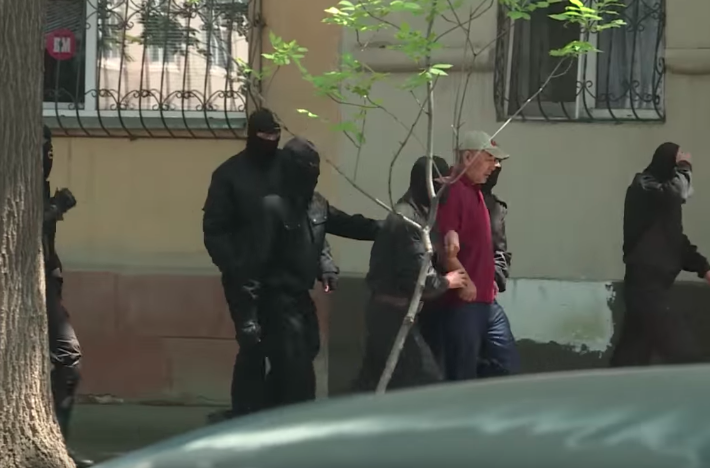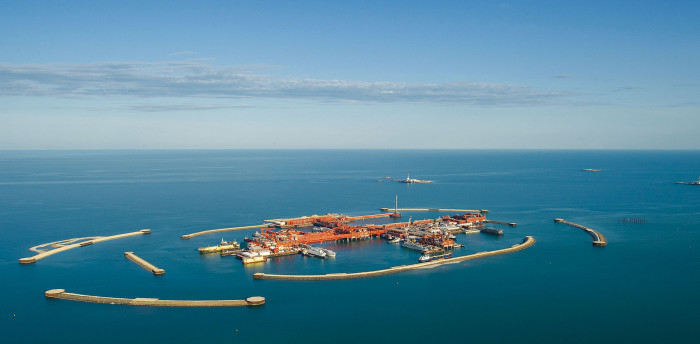
Recent events in Kazakhstan show the regime’s evolving response to discontent from below.
On 4 February, a house fire in Astana, Kazakhstan’s capital, killed five sisters aged between one and 13. Women campaigning for increased social and financial support for “hero mothers” - as mothers to six or more children are known - pointed to the fire as evidence that the state is failing to help families. Rallies were held on 11 February across Kazakhstan, from Aktobe to Karaganda, from Almaty to Shymkent.
Also in February residents of Zhanaozen, in Mangystau region, protested for work, and protestors in Astana and Almaty were detained during the ruling party Nur Otan congress and at the party office, respectively. In March, after Nursultan Nazarbayev's resignation from the presidency, people in Almaty, Astana and Uralsk were arrested for protesting interim President Kassym-Jomart Tokayev's decision to rename the capital Astana into Nur-Sultan, in honour of the outgoing “Leader of the Nation”.
These demonstrations have led at least one analyst to argue that discontent in Kazakhstan is becoming more common. Alternatively, discontent was present before, but has been surfacing more often of late. Regardless, demonstrations in Kazakhstan are significant: protests are rare in a country classified as authoritarian by various measures of regime characterisation.
These protests have spurred reprisals, now as in the past. Changes in the government’s responses to protest - from its violent response against striking oil workers in Zhanaozen in 2011, to the firing of the government in February 2019 following socioeconomic protests - indicate that it has seemingly learned a valuable lesson. In order to maintain stability, the government must appear to hear and respond to the people’s demands.
Since independence, Kazakhstan has legitimised its economic and political trajectory of “democracy through economic growth” or “first economy, then politics” by pointing out its stability compared to other countries. For example, in 2011 former President Nazarbayev pointed out that “the unrest that gripped North Africa and the Middle East was driven by a potent mixture of economics and politics,” adding that “our focus on economic strength and increased prosperity for our citizens is well justified and easily explained. Without such strength, as we have seen repeatedly around the world, stability is put at risk and democratic reform can founder.”
Recent events in Kazakhstan have called Nazarbayev’s narrative of economic strength and stability into question. Interim President Tokayev and his successor after the June elections may or may not be able to rely on a similar rhetorical strategy.
Regional attitudes towards protests
Elite reaction to protests in Central Asia has often focused on “colour revolutions”, and the lessons that the Central Asian authorities implemented from these events to pre-empt similar occurrences. Following the 2004 revolution in Ukraine and the 2005 revolution in Kyrgyzstan, Russia, Belarus, Uzbekistan, Azerbaijan and Kazakhstan took measures to restrain civil society by obstructing NGOs and the political opposition. Central Asian elites treated democratisation as tantamount to regime change led by external actors, in order to justify the shutdowns of organisations engaged in democracy promotion.
The case of Kazakhstan is particularly interesting both because it did not experience a colour revolution, and because it was able to contain major unrest. The government’s response to the 2011 Zhanaozen violence, in which police killed at least 16 oil workers who had been on strike for eight months, indicated that for Kazakhstan stability is equivalent to order, and order is synonymous with a lack of dissent. Five years later, however, the government’s response to protests against amendments to the land code, with a moratorium on the amendments to the law, suggested an evolution in thinking. Here, the government seemed to understand that in order to maintain stability, it must, at a minimum, appear to establish a dialogue to respond to the changing demands of society. This is a lesson that was applied in February this year, when Nazarbayev fired the government.
Police crackdown on striking oilworkers in Zhanaozen, December 2012. Source: YouTube / 666crang.
According to Eurasianet, the government’s departure betrayed “anxiety over growing public discontent” as the then-President “appears to have recognised the potential for sentiments to escalate and has sought to staunch the damage by firing the government en masse.” While the government was technically dissolved, it was effectively a reshuffle, a practice common throughout Kazakhstan's short independent history.
A learning curve?
In 2011-2012, the Kazakh government took several measures in the aftermath of Zhanaozen. These measures included shutting down the internet and mobile services, arresting civil society activists for “inciting social discord,” and holding parliamentary elections seven months before schedule - all while the city of Zhanaozen was still under a state of emergency. Local government officials and oil managers were fired.
The state apparatus tried to defuse tensions by offering rhetorical and material concessions. Workers in the oil town were offered new jobs, and the government invested in local infrastructure. Nazarbayev also vowed to learn from the events of Zhanaozen, stating that “we must draw the appropriate conclusions from this situation, learn from it, and always take it into account.”
Zhanaozen still echoes in the ears of the leadership. “After the conflict, the government pays a lot of attention to Zhanaozen, including investing funds into the Mangystau region to prevent a repetition of the situation,” a government worker told openDemocracy on condition of anonymity. “The government is not so stupid as not to pay attention to social and economic problems in Zhanaozen.”
More recently, in 2016, the Mangystau regional government arbitrated negotiations between Zhanaozen oil workers and drilling company Burgylau, after over 2,000 workers went on strike over conditions and choice of union representative. This suggests that the authorities have continued to address local grievances. As a Freedom House report wrote at the time, “the violence of 2011 has made the authorities more open to dialogue as a means of preventing escalations of industrial unrest.”
In the aftermath of the 2011 clashes, the Kazakh government increased policing in rural areas to monitor anti-government sentiment, according to Erica Marat, professor at the National Defense University in Washington DC and author of a new book on police reform in post-Soviet states. “Post-Zhanaozen massacre, police focus on preempting protests before they can occur, both in rural areas and cities,” Marat told openDemocracy. “This involves a careful study of possible grievances in the population. When protests do occur, police are careful not to use excessive force, but, as often pointed out by analysts, extract the most active members of the public.”

The government’s response to the 2016 protest against proposed changes to the land code that would allow foreigners to rent land for farming, and for the government to lease or sell land, shares both similarities and differences with Zhanaozen, pointing to a further evolution in their thinking on how to best confront unrest.
Similar to Zhanaozen, the government used the 2016 land protests to crack down on political activism, by alleging an attempted coup and detaining activists who vowed to protest peacefully on 21 May 2016. But it refrained from using violence against demonstrators, creating instead a short-lived land reform commission composed of officials and civil society activists that was dissolved in August 2016. In 2016 the Ministry of Information and Communication was also establishedpurportedly to address problems and complaints from society.
Old habits die hard
This past February, Nazarbayev specifically named the “inability of the members of government, ministers and akims [local governors] to work with the population, and to hear the problems of the people” as a reason for his call to dismiss the government.
However, recent arrests, including of activist lawyer Serikzhan Bilash, who brought media attention to the detention of ethnic Kazakhs in Xinjiang, and of two RFE/RL correspondents reporting on the most recent protests in Zhanaozen and on the name change to the capital city, illustrate that human rights activism and reporting on sensitive issues are still taboo in Kazakhstan.
As Joanna Lillis, the author of a new book on Kazakhstan, put it, “the response of the authorities shows that they can be made to listen, to a degree, if they feel the public mood is turning against them. But their intolerance of dissent means that it is difficult to keep in touch with the public mood, which means that negative moods grow, with potential negative consequences.”
Original source: openDemocracy




